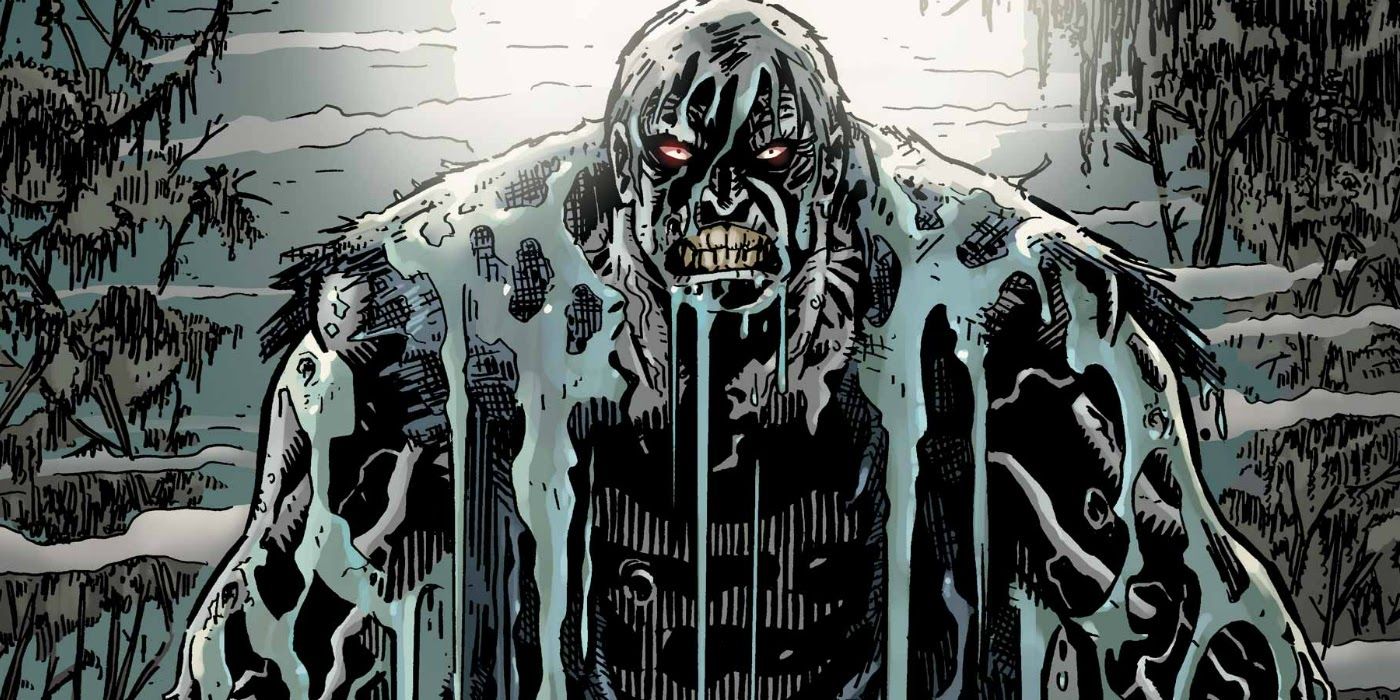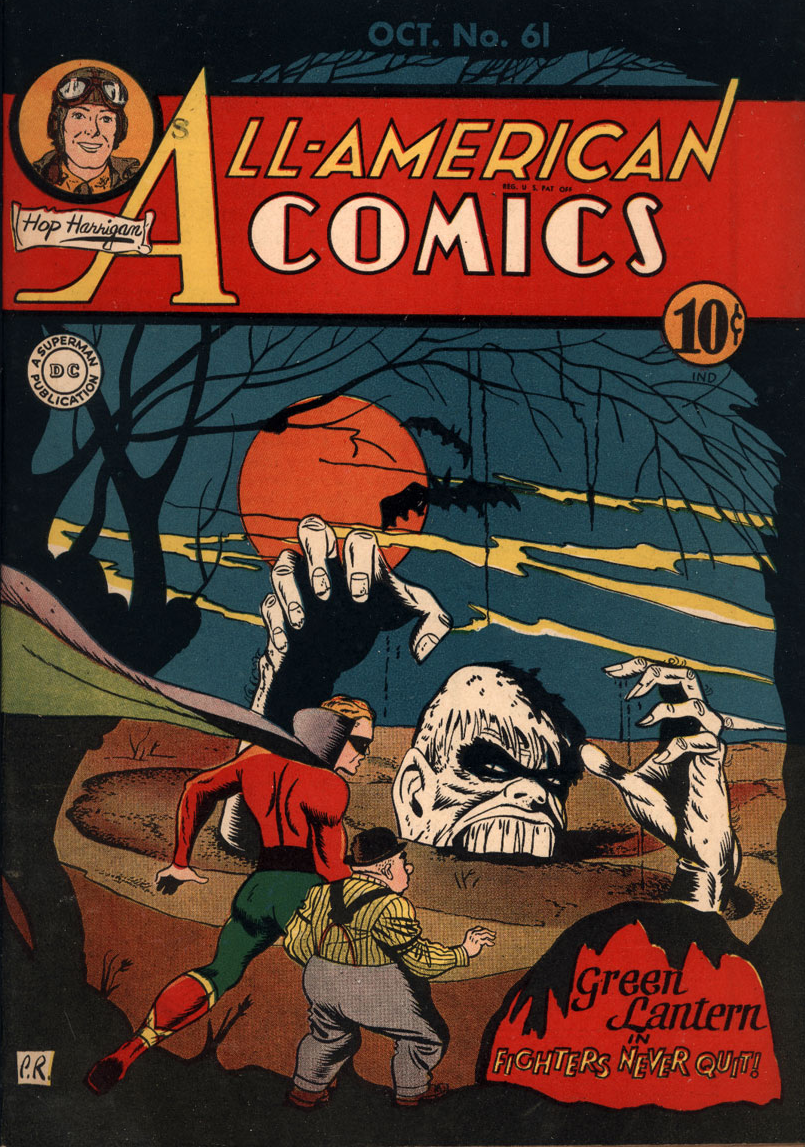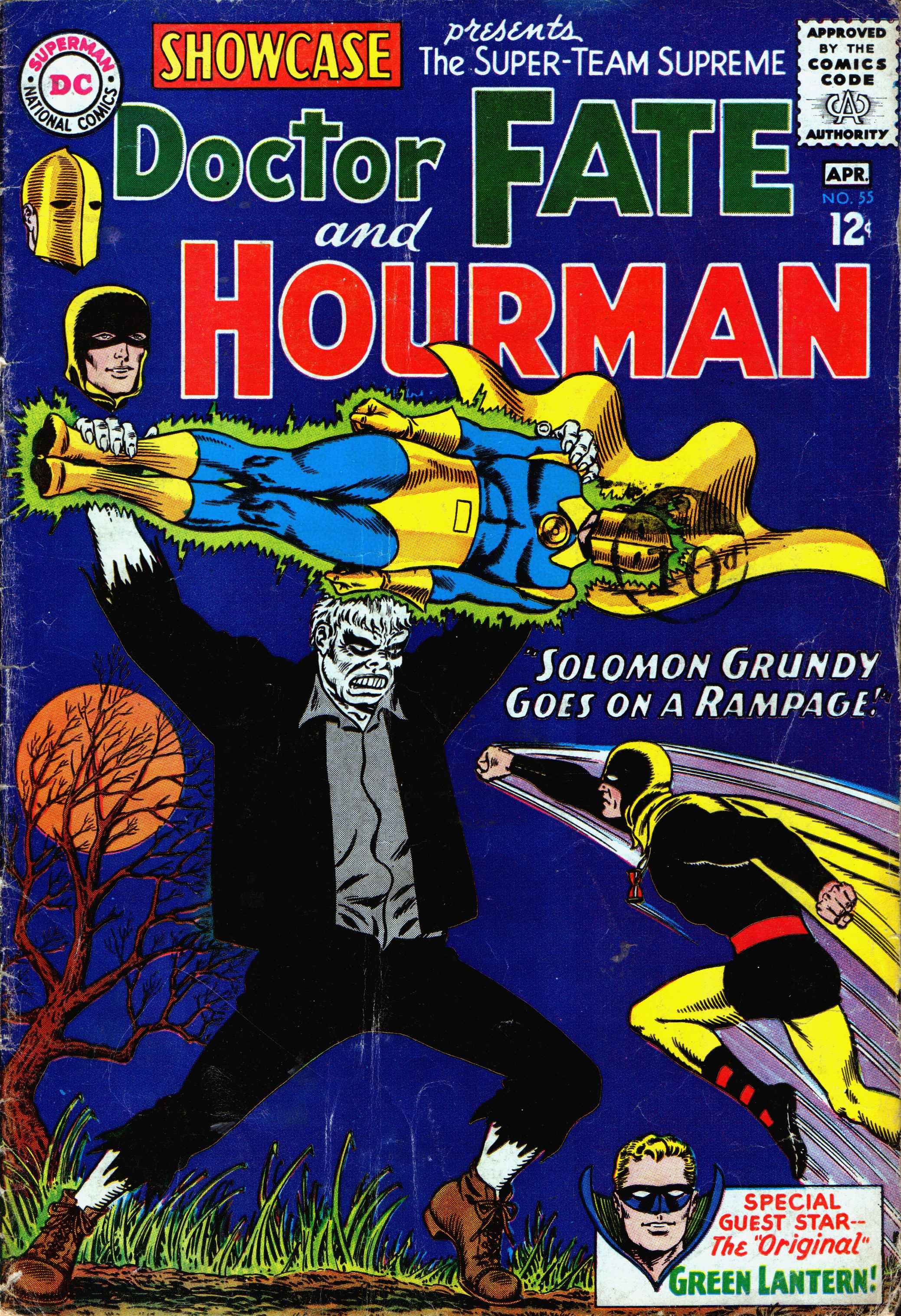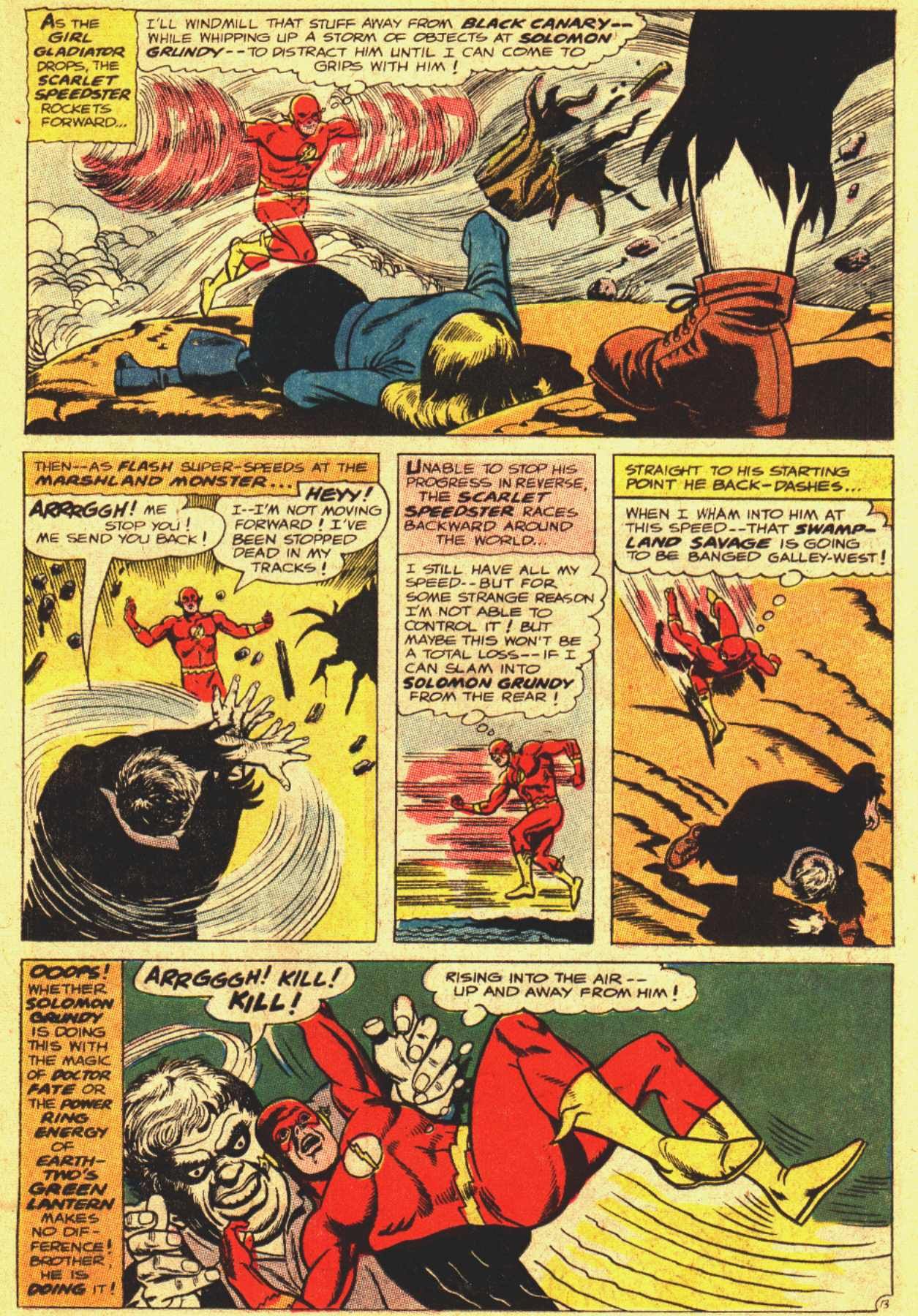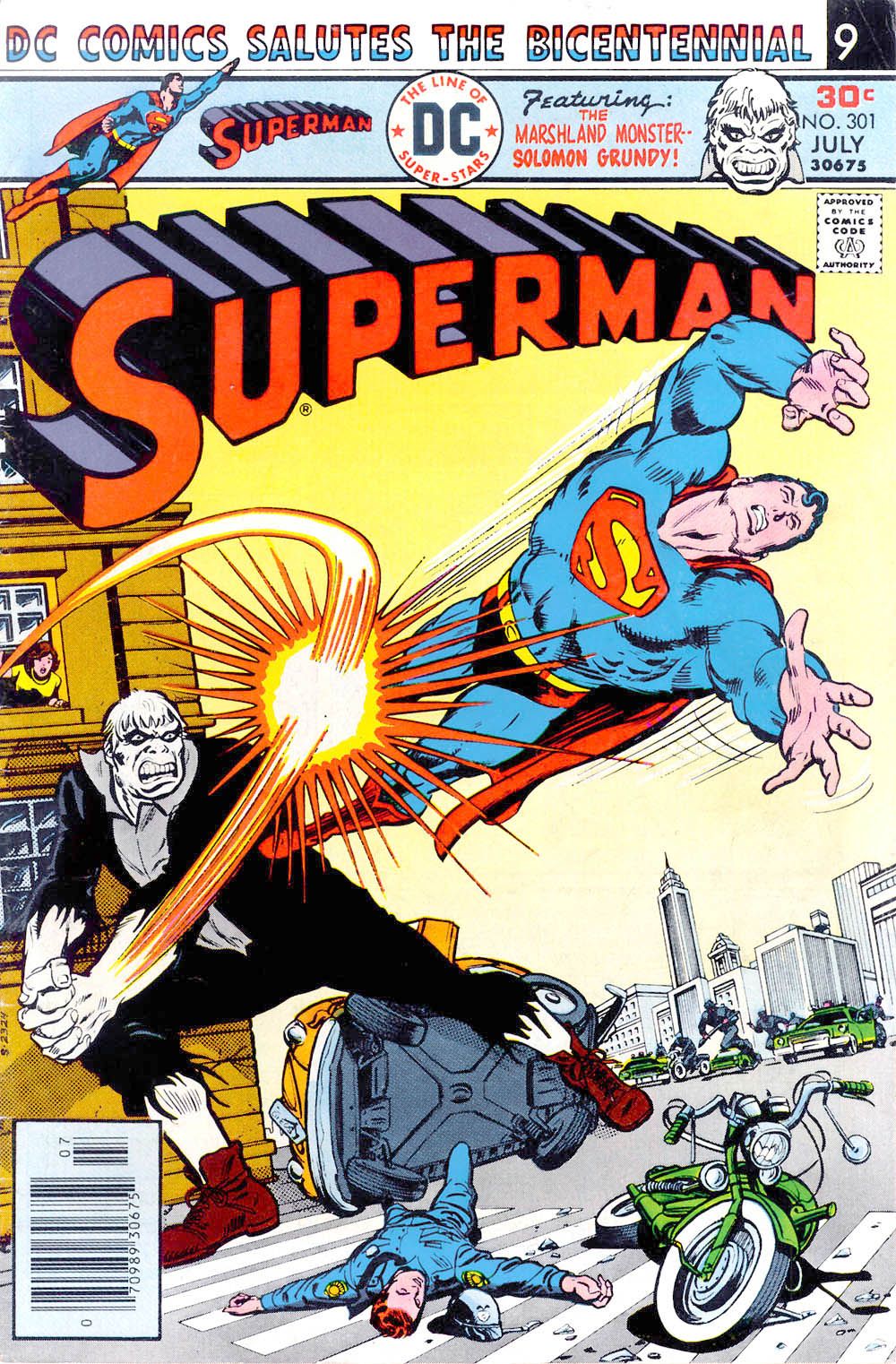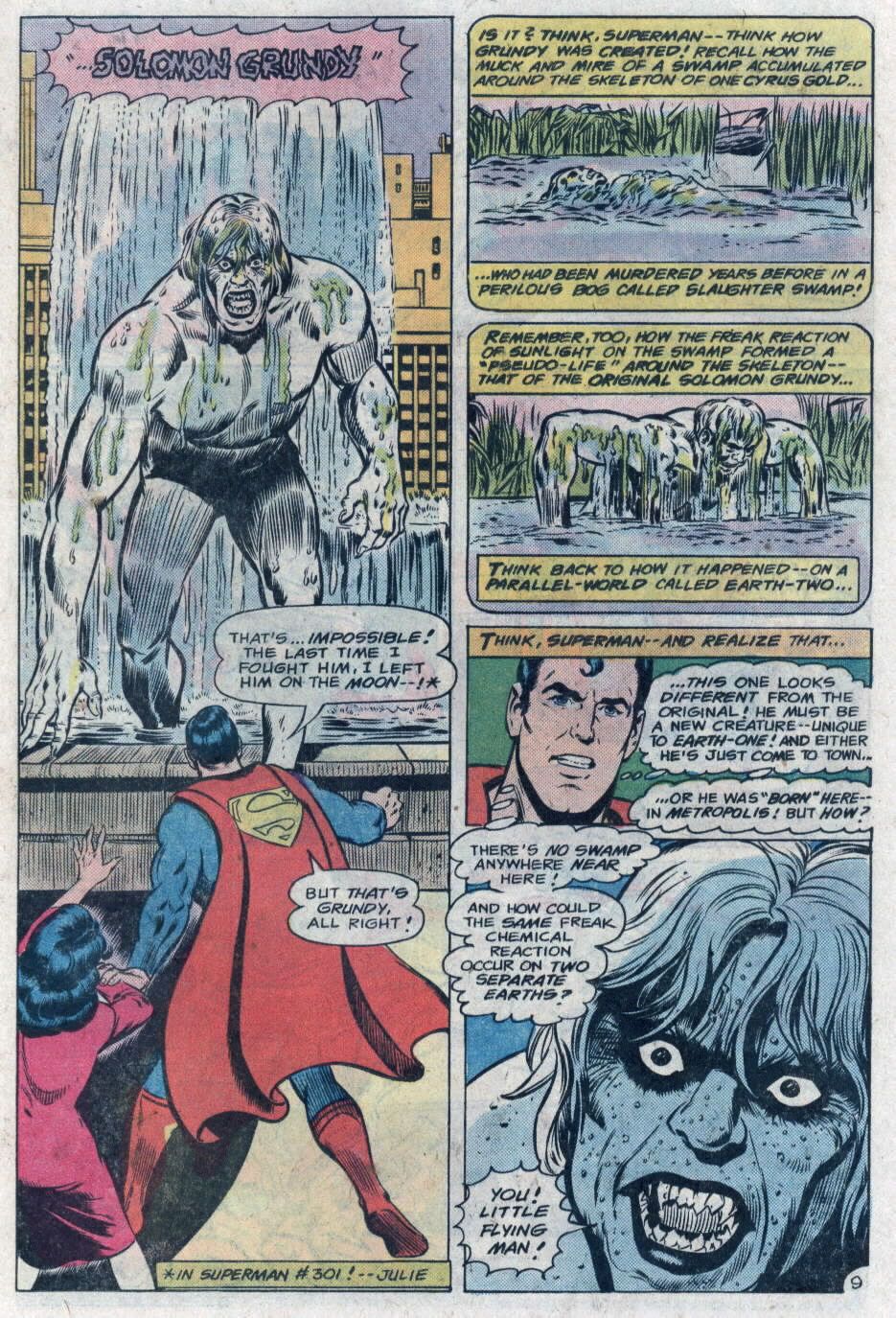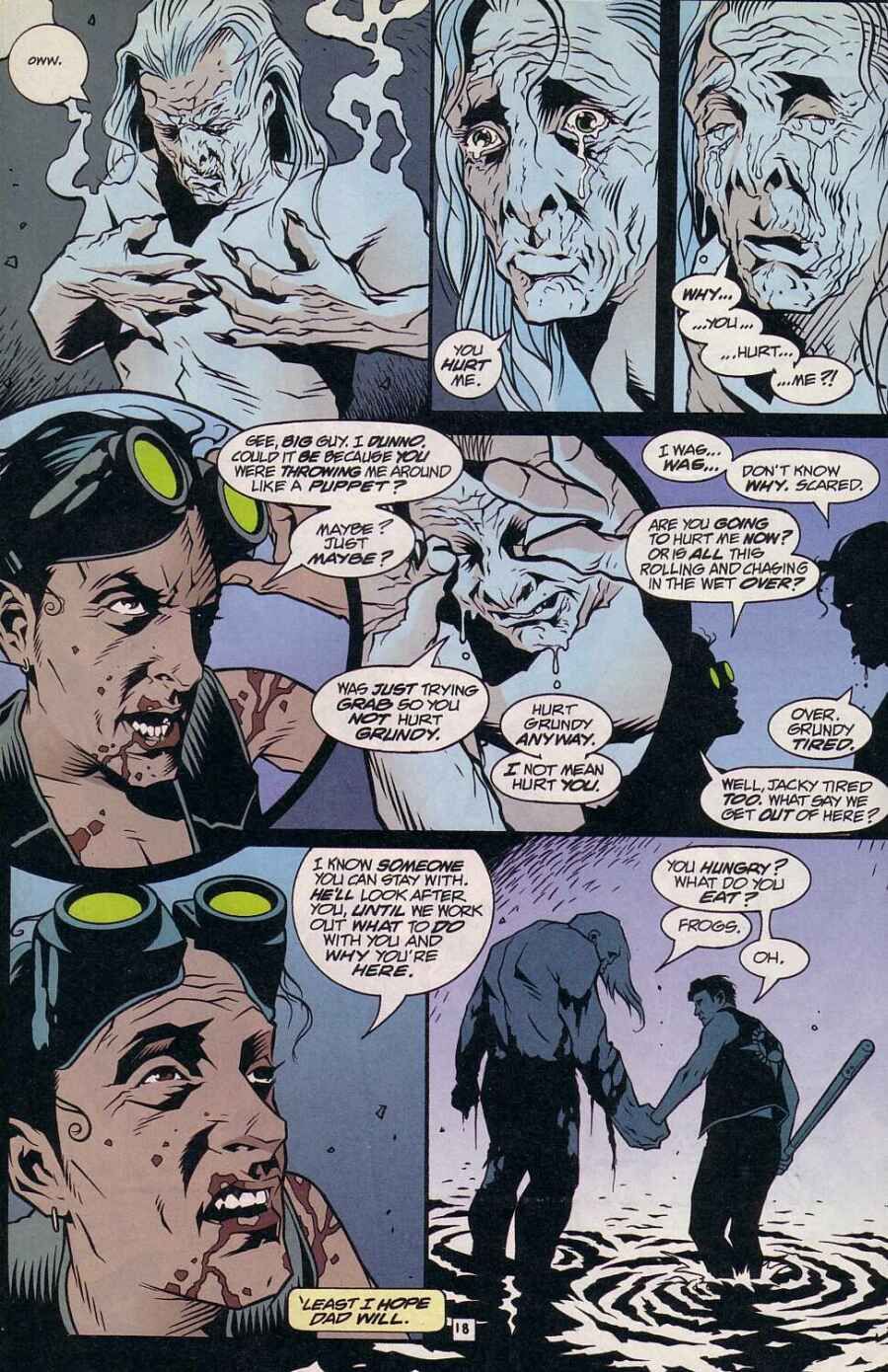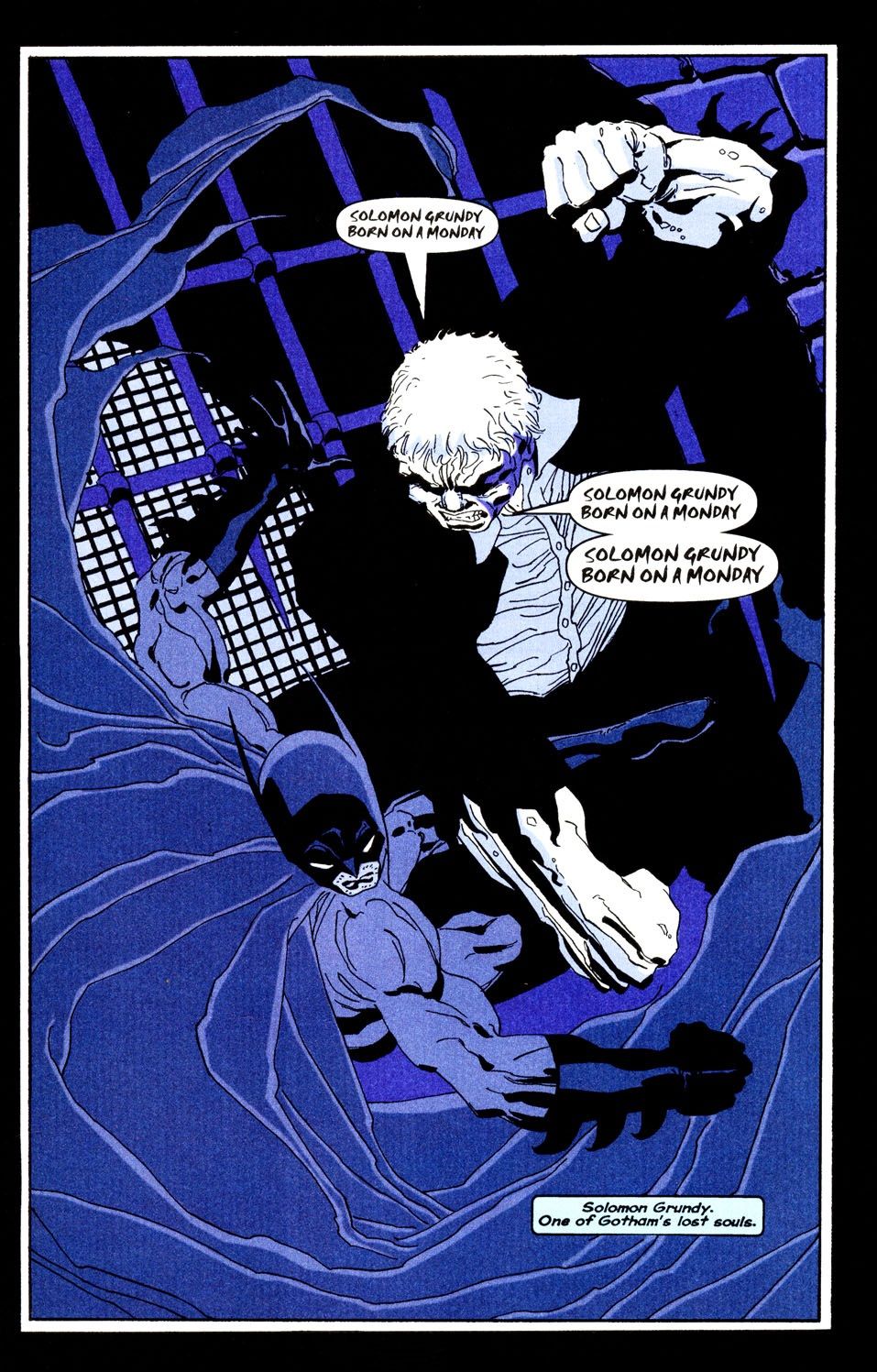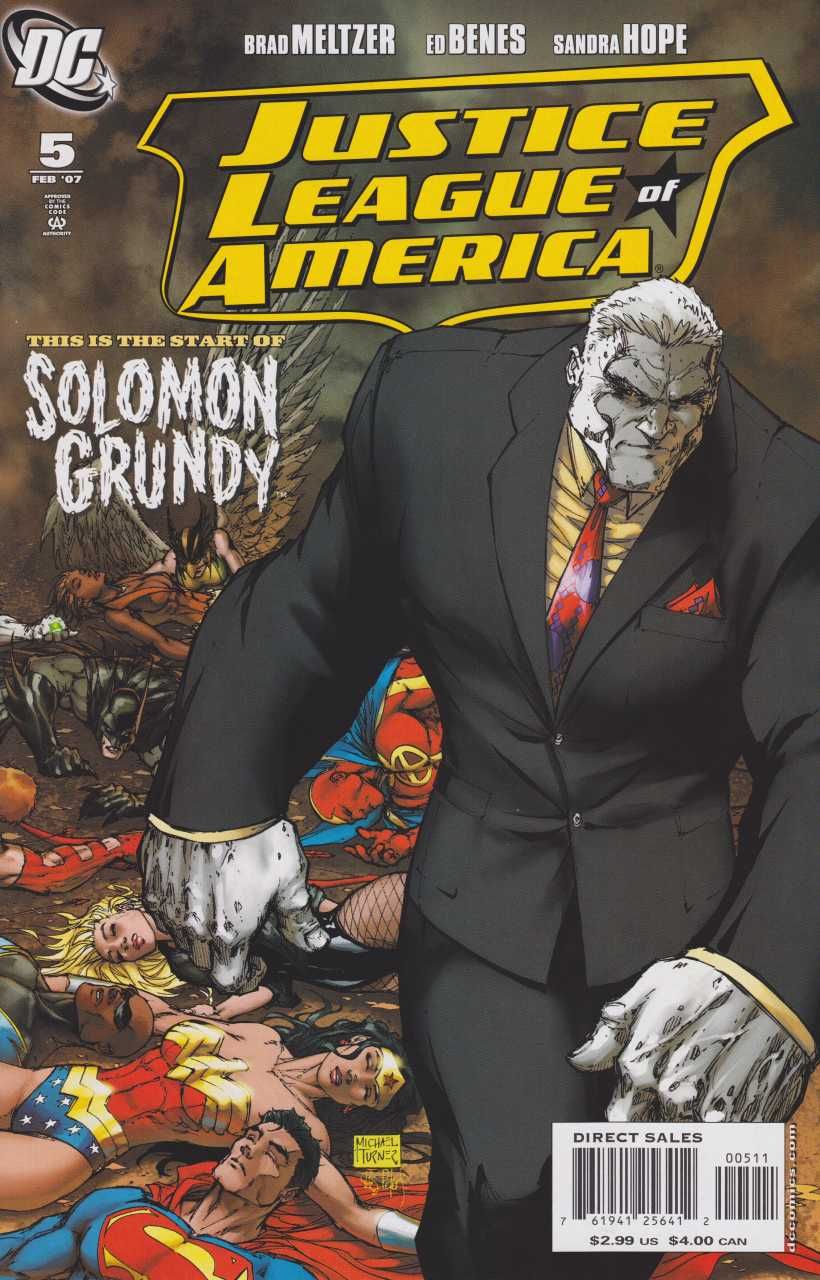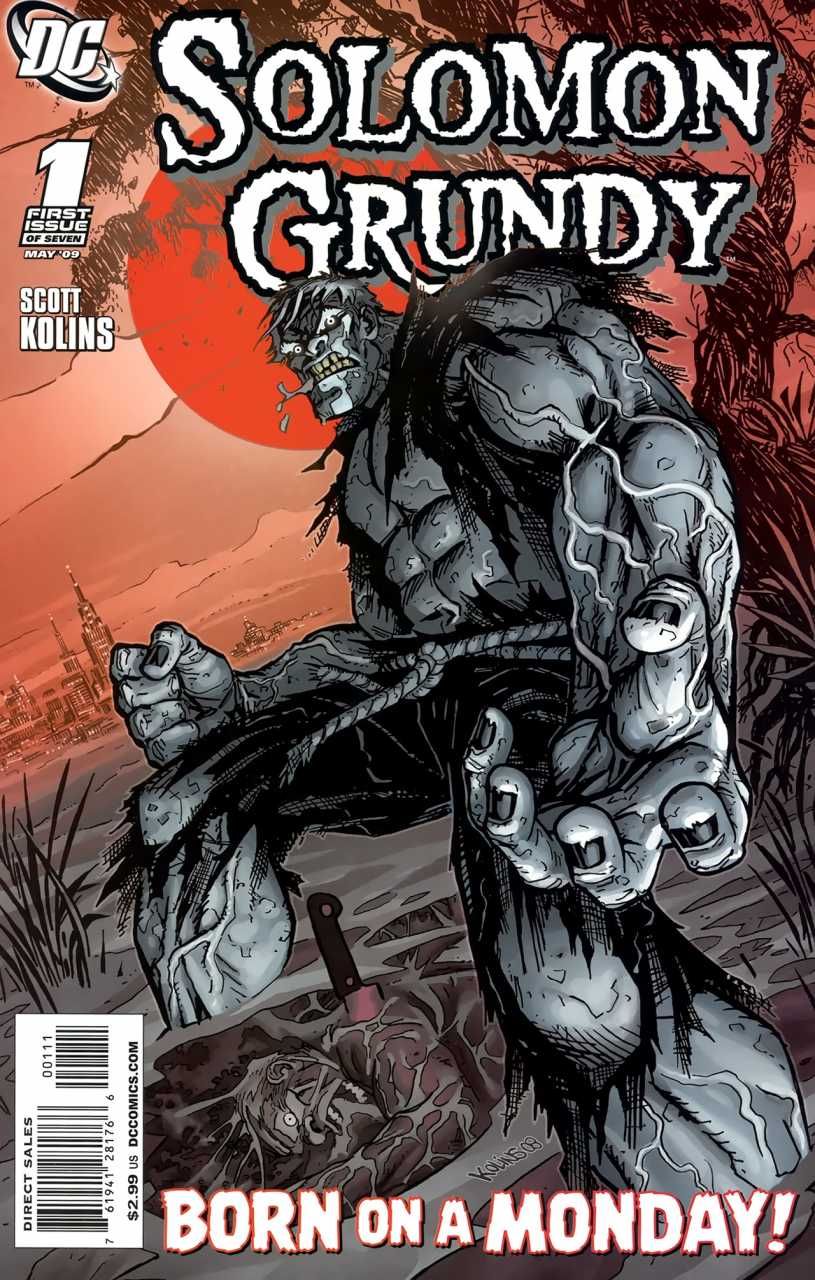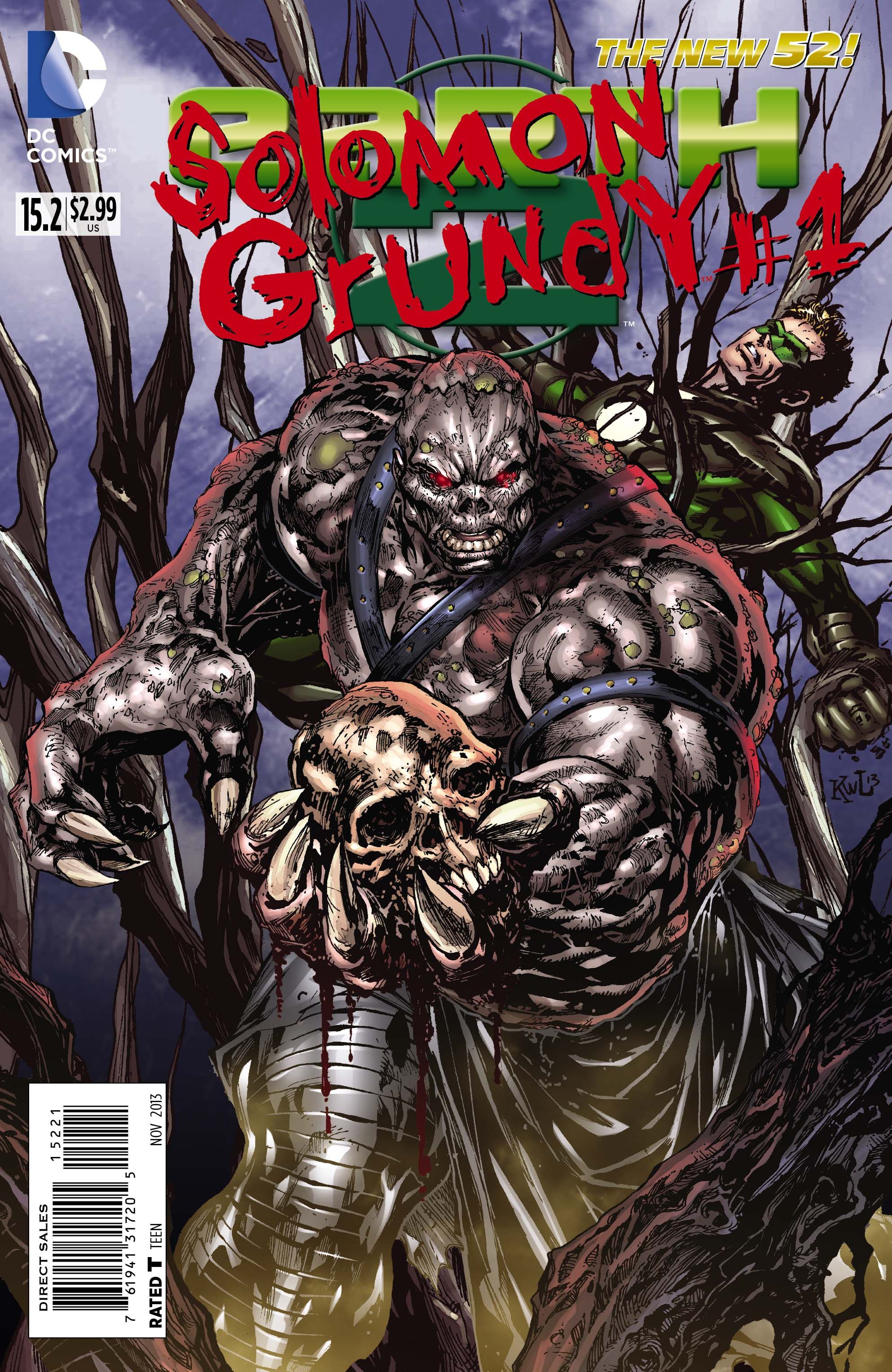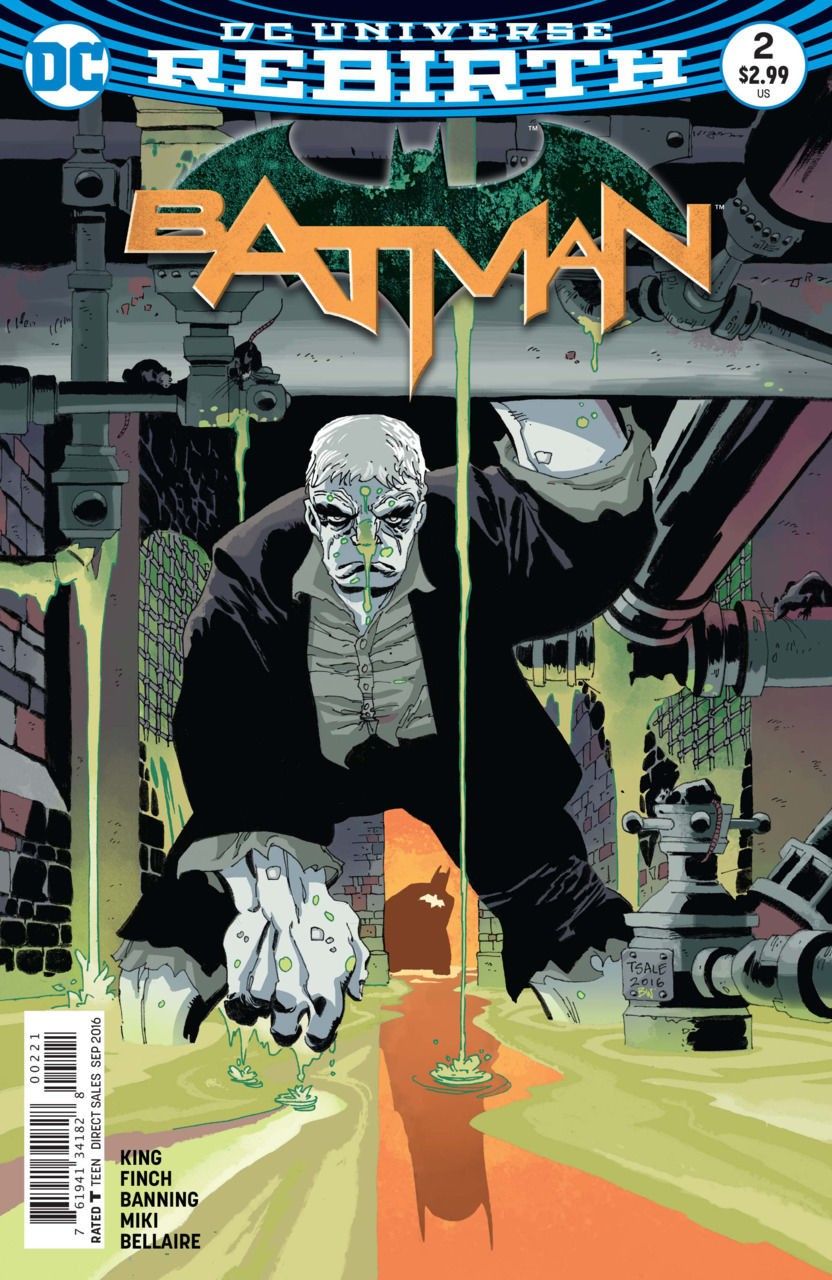The finale of Gotham's third season saw longtime supporting character Butch Gilzean (Drew Powell) seemingly killed thanks to being shot in the head. However, the end of the episode revealed that not only did he survive the close range assault, but that his real name was "Cyrus Gold," thereby implying that he is likely going to be the Gotham version of Solomon Grundy, a longtime DC Comics villain who is one of the rare non-Batman villains from the Golden Age to still be around in comics today.
RELATED: Gotham Finale Introduces A New Villain for Season 4
When it comes to popular culture that has influenced the creation of comic book characters, comic book creators have looked to things as disparate as myths (Thor), films (Archis Andrews essentially is Andy Hardy) and even dirty limericks (Paste Pot Pete)! However, one of the more unusual pieces of pop culture to inspire comic book character was the nursery rhyme, "Solomon Grundy," which goes:
Solomon Grundy,
Born on a Monday,
Christened on Tuesday,
Married on Wednesday,
Took ill on Thursday,
Grew worse on Friday,
Died on Saturday,
Buried on Sunday,
That was the end,
Of Solomon Grundy.
Somehow, comic book writer Alfred Bester (who later became a famous science fiction author, but not before coining the famous Green Lantern "In brightest day, in blackest night" oath while writing the Green Lantern series) was inspired by that poem to create the villainous Solomon Grundy in All-American Comics #61 (along with artist Paul Reinman).
Cyrus Gold was a wealthy man who was murdered and buried in the Slaughter Swamp at the end of the 19th Century. 50 years later, he was somehow re-animated, only due to decomposing in the swamp for decades, his body was now more swamp muck than it was man. He first fought Alan Scott, the original Green Lantern, who had difficulty defeating Grundy for two significant reasons. First off, since Grundy was already dead, it was hard to do anything more to him and secondly, his body had enough tree debris within him that triggered Alan Scott's only weakness as Green Lantern - his ring did not work against wood!
Gotham Season Finale Reveals Origin of Iconic DC Comics Setting
Luckily, Green Lantern was able to stop him by having him get hit by a bus. Grundy soon returned, though, and fought Green Lantern and then the entire Justice Society itself before DC's non-Batman/Superman line of superhero comics essentially folded at the end of the 1940s.
RELATED: Gotham’s Ben McKenzie Teases Scarecrow for Season Four
When the superhero age was re-ignited with the introduction of new versions of the Flash and Green Lantern by editor Julius Schwartz, eventually the Golden Age heroes were worked into the story, as well, with the revelation that DC's classic heroes like the original Flash and Green Lantern lived on an alternate Earth called Earth-2. With that new Earth established, DC slowly tried bringing those heroes back, as well, using Showcase (the title that introduced the new Flash and Green Lantern) to spotlight a pair of older heroes each issue. In Showcase #55, Doctor Fate and Hourman got back into action and their foe was none other than Solomon Grundy!
He was defeated again in that issue, but not before absorbing a little bit of the power of Doctor Fate and the original Green Lantern! He still had that power a year later when he was sent to Earth-1 as part of the annual Justice Society/Justice League crossover, where the powered up Grundy took on both teams!
He ended up trapped once more on Earth-2 by the combined forces of the Earth-1 Green Lantern and the Earth-2 Green Lantern. However, while trapped, Grundy began to think that it was only logical that if there was an Earth-1 Green Lantern and an Earth-2 Green Lantern, then there must be an Earth-1 Solomon Grundy! He somehow found his way back to Earth-1 to find out in Superman #301!
Superman stopped him in that issue (trapping him on the moon), but sure enough, Grundy's presence on Earth-1 ended up kick-starting the creation of an Earth-1 Solomon Grundy in Superman #319!
The existence of the two Grundys ended when Crisis on Infinite Earths merged the DC Universe into just one Earth. One Earth=One Grundy. In this version of the DC Earth, Grundy's original origin stayed the same, including his fight with the Golden Age Green Lantern, it's just that it took place on a single Earth (as the Justice Society now just fought crime years before heroes like Superman and Batman did).
Grundy became obsessed with Jade, the daughter of Alan Scott, and member of Infinity Inc. (a team made up of the children of the original Justice Society, plus other younger heroes). He was so enamored with her that he did whatever she wanted, thus becoming a sort of superhero himself and ally of Infinity Inc. However, a villain then disguised herself as Jade and used Grundy to tear apart Infinity, Inc, even killing one of the members of the team!
Grundy's next major appearance came in the pages of Starman #10, where he was now a kindhearted soul living in the sewers of Opal City...
His personality change was revealed to be a result of the fact that now every time he "died," he would be resurrected with a new personality and new power level (this was likely just to explain the vastly inconsistent ways that writers had been depicting him since Crisis on Infinite Earths, but it was still a clever solution).
RELATED: Gotham Isn’t Batman Begins – It’s Owlman’s Overture
Meanwhile, in the pages of Batman: The Long Halloween, Jeph Loeb and Tim Sale also worked Solomon Grundy into the history of Batman with their spin-off series set in the early days of Batman's adventures. Grundy had fought Batman before, but now he was solidly placed as part of Batman's Rogues (which makes sense, as Slaughter Swamp, the magical place that gave him his powers, had always been in Gotham City)...
Brad Meltzer decided to work with the idea that every time Grundy was resurrected, it was with a new personality. He decided that eventually, one of those personalities would be criminal genius, and that's who he used as the big bad guy in his initial story arc on Justice League of America following Infinite Crisis (Grundy had been killed in the final issue alongside many other heroes and villains).
A new version of Grundy was introduced as a tie in to Blackest Night, as the resurrection of supervillains wreaked havoc with Grundy's typical return from the dead, as well. Cyrus Gold was now given a week to solve his own murder and trying to find a way to gain absolution so that he would not become Grundy again...
Then the New 52 happened, and Grundy was re-introduced as an Alan Scott Earth-2 villain, this time as part of DC's big "The Grey" vs. "The Green" overarching story arc, as Grundy was seen as a representative of "The Grey" while Scott was the hero of "The Green"...
Most recently, though, following DC Rebirth, the classic version of Grundy has once again become a Batman foe...
And that's most likely how Grundy will be used going forward in the DC Universe, making him a perfect foil for Gotham.

